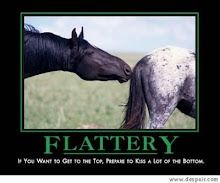 This is her hoof all prepared for the sole guard. See the "ditch (white area) between her outer hoof wall ( grey) and her sole ( dirt coloured atm). This is the area the trimmer has been trying to get to "heal". Also notice in this horse the vertical toe-line where her sole and wall connect, this shows drastic change in her hooves. I should have done something about this sooner!!!! No ones perfect and we trust in our professionals.
This is her hoof all prepared for the sole guard. See the "ditch (white area) between her outer hoof wall ( grey) and her sole ( dirt coloured atm). This is the area the trimmer has been trying to get to "heal". Also notice in this horse the vertical toe-line where her sole and wall connect, this shows drastic change in her hooves. I should have done something about this sooner!!!! No ones perfect and we trust in our professionals.That green nstuff I hear you ask? It's blue tack. Under the blue tack is some copper sulfat ewhich has been put into small cavities that had formed. Left unattended they could have become abscesses. Why blue tack? Just in case all the yuck hadn't been removed it's easy to pull out and clean up.

Sole guard is like a rubbery plastic stuff, that comes out liquid and sets into a semi-solid. The SG was put into the "ditch" and covered in a special plastic sheet while it set.
Once dried, the plastic can be removed and the area cleaned up. I will state this is NOT the intended use of sole guard, which s generally used on the.. you guessed it... soles! We were just using it as fake hoof, to see if it worked. I've been told it's a great product, we were just trying to cheat.
Sole guard, used in the proper way, should last a few weeks, depending on your environment and how much you ride. This lasted about a week, and made her no worse or better off for the time it stayed in there. Back to the drawing board eh?
Another trimmer came by to do a different horse, so I asked him what he though we could do?
He was amazed that we'd tried this, and thought it to be a waste of time ( and money..grrr). He felt that putting stuff in there would make it worse rather than better, and suggested to put a roll to reduce the chance of her doing more damage as she rolled over her toe which was currently flat. He explained it like fingernails:
Think of the horses sole as the tip of your finger, and the wall like your nail, in this analogy the quick is the same as the laminae boundary ( sensitive to insensitive). When you "walk" with your finger, you will roll from the pad through the tip and onto your nail. If your nail is too long it will pull back painfully on your quick, this is akin to seperation of the sensitive to insensitive laminae, commonly called "white line seperation". That's YOUR finger which is not weight bearing...... think about it for the horse. Makes a little bit of sense doesn't it?
Hooves rolled ( nice guy did it for free for me! So he could explain it totally), and she walks off pretty well. Weight bearing has been reduced from the walls and increased onto the sole callous. She's great in the arena, and on the grass, still a little tender on the driveway ( gravelly on a hard clay surface). There's improvement, but I'd like to see more....
....the quest is on to find the better way for this horse!!!
Like to learn more about hooves?
http://www.hoofrehab.com/
http://www.uq.edu.au/~apcpolli/
http://www.farriervet.com/evolutionfarriery.html

No comments:
Post a Comment